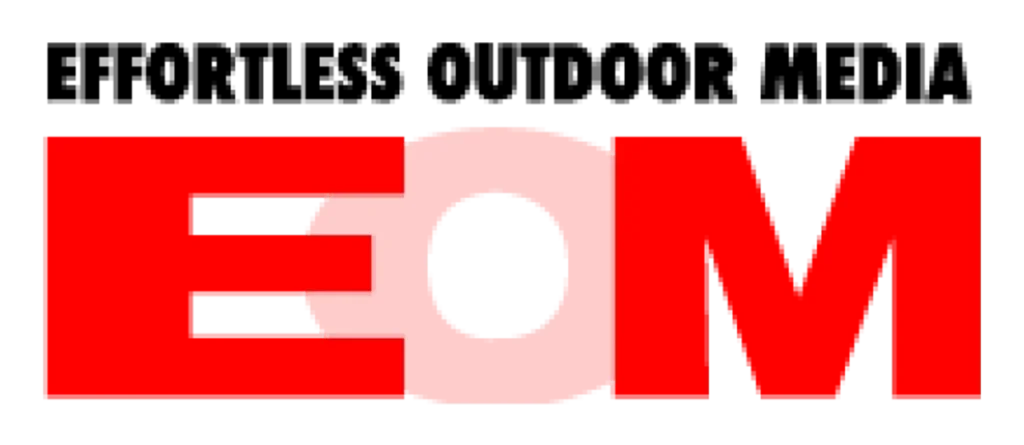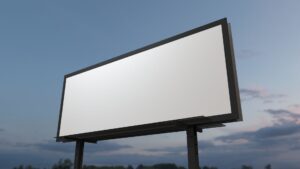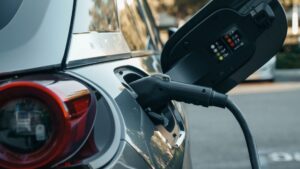Why Billboard Design Matters More in Competitive Advertising Markets
In cities where advertising is everywhere—on billboards, buses, digital screens, and storefronts—standing out is more challenging than ever. Highly competitive markets, such as New York, Los Angeles, and Chicago, require brands to go beyond just placing a billboard; they need to design it strategically to grab attention and leave a lasting impression.
In this blog, we’ll explore why billboard design is crucial in competitive advertising markets, the key principles that make billboards stand out, and best practices for high-impact design in ad-heavy environments.
The Challenges of Billboard Advertising in Competitive Markets
In major metro areas, advertising clutter is a major concern. Audiences are bombarded with hundreds of ads daily, making it harder for any single message to stand out.
Key challenges of advertising in competitive markets:
✔ Ad Saturation – Large cities have billboards stacked on top of one another, forcing advertisers to compete for limited attention.
✔ Fast-Paced Audiences – Urban commuters and drivers have seconds or less to process an ad.
✔ Distractions – Digital screens, moving ads, and city lights distract viewers, reducing engagement with static billboards.
✔ High Costs – Premium billboard locations in high-traffic areas require strong ROI, meaning the design must be effective.
The solution? A well-designed billboard that cuts through the noise and makes an instant impact.
What Makes a Billboard Stand Out in a Crowded Market?
A strong billboard in an ad-heavy environment must be:
✔ Visually striking – Bold colors, high contrast, and unique designs catch the eye.
✔ Simple and direct – A quick, memorable message is easier to process.
✔ Creative and unexpected – Unique elements help break through ad clutter.
✔ Strategically placed – The right billboard location enhances visibility.
By following these principles, advertisers increase brand recall and engagement, even in the most saturated advertising spaces.
Best Practices for Billboard Design in Competitive Markets
1. Keep the Message Clear and Concise
- Seven words or fewer is ideal for quick comprehension.
- Avoid clutter—if the viewer can’t read it in three seconds, it’s too long.
✔ Effective example: “Best Coffee in Town – 2 Blocks Ahead.”
✖ Ineffective example: “Come try our handcrafted, organic coffee blends made fresh daily, just two blocks ahead on Main Street!”
Pro Tip: Test readability by standing 20 feet away from your design on a screen. If it’s difficult to read, simplify it.
2. Use Bold, High-Contrast Colors
- In bright, ad-heavy cities, muted colors get lost.
- High contrast between text and background ensures readability from a distance.
✔ Best color combinations for visibility:
- Yellow text on black background
- White text on dark blue background
- Red and white (but avoid using too much red, as it can blend into stop signs and traffic signals)
3. Leverage Unique and Unexpected Design Elements
- 3D extensions or cutouts create a sense of depth and movement.
- Minimalist designs stand out among cluttered ad spaces.
- Optical illusions or interactive features encourage social sharing.
Example:
✔ A McDonald’s billboard used steam vents on a cold New York morning to make it look like the coffee was steaming from the billboard itself.
✔ A BMW ad placed mirrors in a billboard, making it appear as though viewers were already driving the car.
Why it works:
✔ Unexpected visuals break the monotony of traditional billboards.
✔ Memorable designs encourage word-of-mouth and online sharing.
4. Optimize for Different Viewing Speeds
Billboards in busy metro areas are viewed at different speeds, depending on whether they are seen by:
✔ Drivers on highways (2-3 seconds of viewing time)
✔ Pedestrians in slow-moving urban environments (10+ seconds)
✔ Transit riders (5-10 seconds in a station or on a bus route)
Best practices:
- Highway billboards: Short, high-impact messaging (e.g., “Best Burgers – Exit 7.”)
- Pedestrian-focused billboards: More detail and QR codes (e.g., “Scan for 20% Off Your First Visit.”)
- Transit billboards: Multiple message variations on digital screens to engage repeat commuters.
5. Consider Digital Billboards for Flexibility
In highly competitive markets, digital billboards allow advertisers to:
✔ Rotate multiple ads throughout the day, targeting different audiences.
✔ Update creative in real time to align with news, events, or promotions.
✔ Increase engagement with motion graphics or live data feeds.
Example:
✔ A weather-responsive digital billboard in Times Square showed hot coffee ads on cold days and iced drinks on warm days.
✔ A countdown billboard for a new sneaker release built anticipation by updating daily until launch.
Why it works:
✔ Dynamically changing content captures repeat attention in high-foot-traffic locations.
✔ Timely updates make the ad feel fresh and relevant.
Billboard Placement Strategy: Finding the Best Locations in Competitive Markets
Even the best-designed billboard won’t succeed if it’s placed poorly. Strategic placement is essential in competitive ad markets.
1. Choose High-Visibility Locations
- Avoid billboards that are partially blocked by trees, poles, or buildings.
- Position billboards at natural sightlines for both drivers and pedestrians.
✔ Best placements:
✔ Near traffic lights, where cars stop and drivers have more time to read.
✔ Highway exits and on-ramps, where commuters make split-second decisions.
✔ Pedestrian-heavy streets, where people have longer exposure times.
2. Dominate Key Intersections and Transit Hubs
- Billboards near bus stops, subway entrances, and commuter routes have high daily repetition.
- People in transit-heavy areas see the same ads multiple times per week, strengthening brand recall.
✔ Best transit locations for billboards:
✔ Subway entrances and platform billboards
✔ Bus stops in shopping districts
✔ Billboards near train stations
Why it works:
✔ Repetition builds brand familiarity.
✔ Longer exposure time allows for more detailed messaging.
Common Mistakes in Billboard Design for Competitive Markets
🚫 Overcomplicated Designs – Too much text or too many elements reduce impact.
🚫 Low-Contrast Colors – Poor color choices make the ad blend into the background.
🚫 Generic Messaging – A billboard that doesn’t stand out is a wasted investment.
🚫 Ignoring the Viewing Speed – Too much detail on a highway billboard makes it unreadable.
✔ Solution: Keep it bold, simple, high-contrast, and strategically placed.
Winning in Competitive Billboard Markets
In ad-heavy cities, billboard design matters more than ever. The right combination of bold visuals, strategic messaging, and premium placement can help advertisers stand out and maximize ROI.
Effortless Outdoor Media specializes in high-impact billboard design and placement strategies for competitive markets.
Need a billboard that stands out in an ad-heavy city?
Contact Bill Hobbs at Effortless Outdoor Media today to create a high-impact campaign in the most competitive advertising landscapes.
“If you are in need of expert advice and knowledge about billboards in the Atlanta market, Bill Hobbs brings tremendous value.” | From Dan Jape, Owner of RELIABLE HEATING AND AIR.



